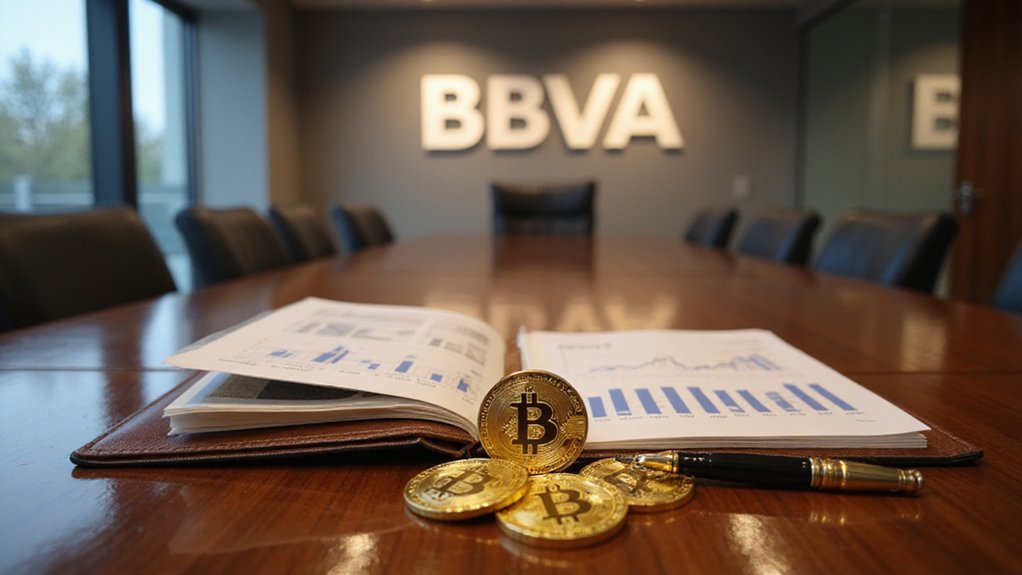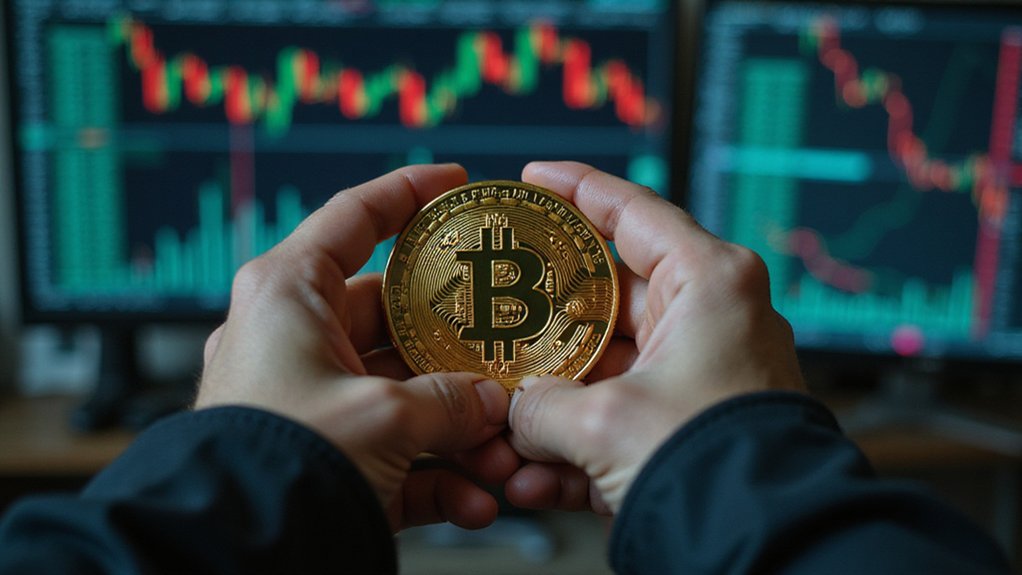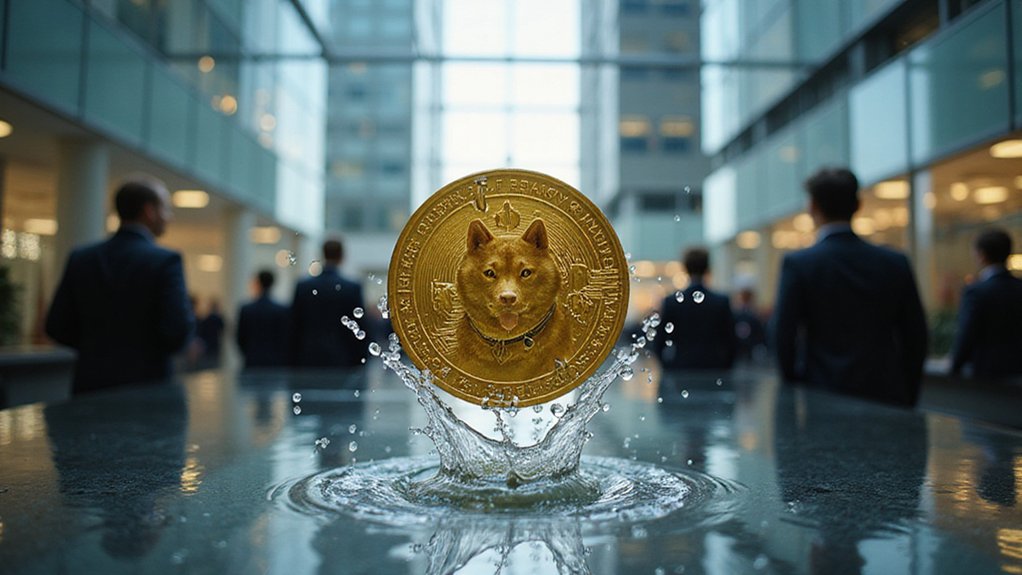The storied halls of Goldman Sachs—once echoing with the traditional cadence of investment banking—now reverberate with the disruptive vocabulary of blockchain and digital assets.
For the first time, the venerable institution has mentioned cryptocurrencies in its annual letter to shareholders, a watershed moment signaling that digital currencies have transcended their fringe status to command attention at the highest echelons of global finance.
This acknowledgment comes as Goldman’s crypto ETF holdings have surged to $2.05 billion in Q4 2024—nearly tripling from $744 million in the previous quarter.
Goldman’s crypto ETF portfolio has exploded threefold—a $2.05 billion testament to Wall Street’s accelerating digital asset embrace.
The firm’s crypto portfolio now boasts approximately $1.6 billion in Bitcoin ETFs (with substantial exposure to BlackRock’s iShares Bitcoin Trust) and $476.5 million in Ethereum ETFs, up from a mere $25 million in Q3.
Such meteoric growth isn’t merely numerical; it represents a fundamental pivot in institutional strategy.
Goldman’s approach to cryptocurrency volatility—that double-edged sword of opportunity and risk—has been characteristically sophisticated, employing both put and call options to navigate market fluctuations that would make traditional equities traders blanch.
This options strategy reflects the firm’s pragmatic approach to an asset class where overnight double-digit swings remain unremarkable.
The firm maintains a significant options strategy position of $527 million in puts on IBIT and $157 million in calls, demonstrating its comprehensive risk management approach.
The firm’s exploration of spinning out its GS DAP technology platform from its Digital Assets business further demonstrates its commitment to distributed ledger technologies.
The spin-out aims to establish an industry-owned distributed technology solution that could revolutionize digital capital markets infrastructure.
This strategic maneuver positions Goldman to capitalize on the increasing client demand for crypto-related products while maintaining operational flexibility.
What remains conspicuously absent—and increasingly vital—is regulatory clarity.
The current regulatory landscape resembles a patchwork quilt of inconsistent frameworks across jurisdictions, a situation that hampers broader institutional adoption despite growing client interest.
As Goldman Sachs deepens its crypto involvement, it exemplifies the transformation occurring throughout financial services.
The regulatory environment is expected to evolve toward a more favorable framework for cryptocurrency growth, particularly following recent political shifts in the United States.
The institution that once symbolized traditional banking now stands at the vanguard of the digital asset revolution—a metamorphosis that would have seemed improbable just five years ago.
In the financial world’s perpetual evolution, even Goldman Sachs must adapt or risk obsolescence.









